
A World at Play:
The Current State of the Video Game Industry
What the Video Game Industry Looks Like Right Now
Since the release of Pong and consumer-ready home gaming consoles in the early 1970s, the video game industry has come a long way.
With modern-day games and gaming platforms offering photorealistic graphics, reality simulation, and the ability to connect with millions of other players online, playing video games has become more than just a childhood hobby for many—it has evolved into a lifestyle for people of all ages.
Today, there are nearly 227 million Americans playing video games, and the highest concentration of gamers are those between 18 to 34 years old.
The global market for video games is massive. In 2021, the video game industry as a whole expanded to total revenues of $180.3 billion, up 1.4% from the previous year when the industry experienced tremendous growth sparked by the global pandemic.
Where can video games go from here? If the industry follows its consistent pattern of progressive growth, some experts foresee global market revenues topping $510 billion by 2031.
Due to natural market growth, increased Internet accessibility, development of advanced video game technologies, and higher engagement rates caused by the COVID-19 pandemic in 2020, the video game industry is now considered one of the biggest industries in the U.S. In 2021, the video gaming market size in the U.S. surpassed $85.86 billion, topping the previous all-time high in 2020 of $76.15 billion.
In terms of annual revenue, the video gaming market in the U.S. ranked second in 2020 (just behind China), generating $36.92 billion. And consumer spending levels continue to remain strong.
From April to June (Q2) of 2021 alone, the overall total consumer spending on video gaming in the U.S. totaled $14 billion, which was an increase of 2% compared to Q2 of 2020.
Table of Contents
- What Constitutes a Gamer?
- Gaming Platforms: How Gamers Choose to Play
- Console & PC Video Game Statistics
- Mobile Video Game Statistics
- Cloud Video Game Statistics
- How the Pandemic Shaped Gaming
- The World of Indie Game Development
- Are Indie Games Profitable?
- Most Profitable Indie Game Genres
- How Indie Developers Can Win Against Big Studios
- What Does the Modern Game Developer Look Like?
- Takeaways
Within the global video game market—which includes computer, console, mobile, and social games—there are several major players contributing to the explosion of video game popularity. From October to December (Q4) of 2020, some of the most successful public companies in terms of gaming revenue include Tencent, Sony, and Apple.
Tencent—the highest-grossing gaming company worldwide—generated approximately $7.93 billion in global game revenue in Q2 of 2021.
From demographics and video game platform market share to industry-wide gaming trends, Liquid Web’s State of the Video Game Industry Report will help paint a picture of where the video game sector currently stands as well as where it’s headed soon.
Let’s take a closer look at video game statistics surrounding topics like:
- Gamer demographics.
- Popular gaming platforms.
- The impact of COVID-19 on the gaming industry.
- Indie game development.
- Modern game developers.
What Constitutes a Gamer?
Just as mobile gaming demographics are diverse, the entire gaming industry is seeing shifts in what constitutes a modern-day gamer. In 2021, women accounted for 45% of gamers in the U.S., up from 41% of U.S. gamers identifying as women during the previous year.
As millennials have grown up with video games as a normal part of life, the age of the average gamer has also increased.
Here is the breakdown of age demographics from a 2021 survey:
- Under 18 years: 20%
- 18 to 34 years: 38%
- 35-44 years: 14%
- 45 to 54 years: 12%
- 55 to 64 years: 9%
- 65 and older: 7%
Gaming Platforms: How Gamers Choose to Play
With more gaming platforms to choose from than ever before, the way gamers play has expanded past traditional video game consoles and gaming PCs. Below, we will break down current video game industry statistics around:
- Console gaming.
- PC gaming.
- Mobile gaming.
- Cloud gaming.
Console & PC Video Game Statistics
More gamers utilized their game consoles (e.g., Nintendo, PlayStation, and Xbox devices) in 2020 than in 2019, and it’s no surprise why. As more time was spent at home during the first wave of the pandemic, there was a larger increase in monthly digital console gamers than any other gaming device—growing by 6.3% year over year.
As of September 2021, the split between Sony, Microsoft, and Nintendo of global lifetime sales across current and previous generation gaming consoles looks like this:
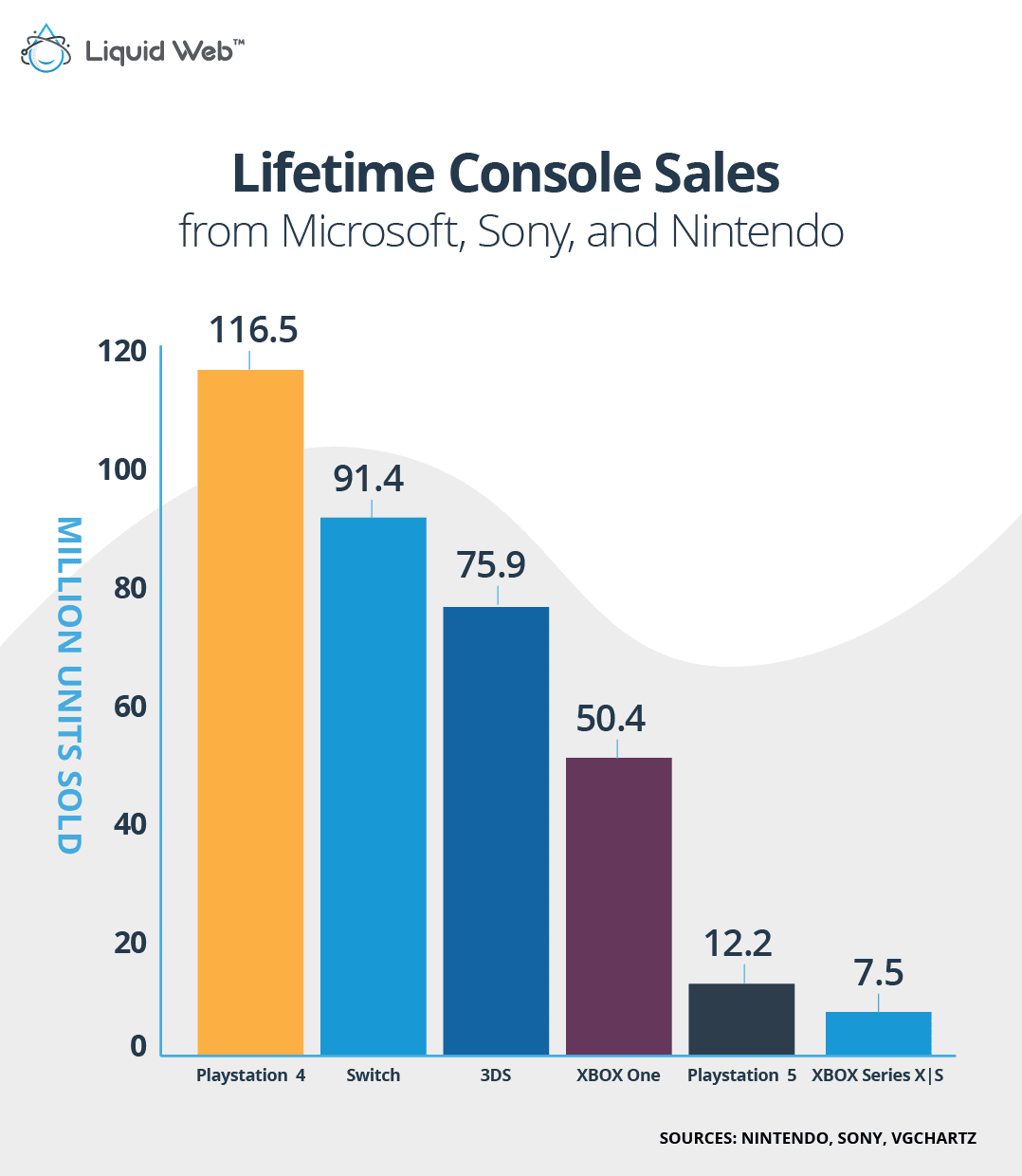
Although Sony’s current and previous generation PlayStation consoles dominate in lifetime sales in comparison to Microsoft, Nintendo’s current and previous generation consoles have more global lifetime sales than either Sony or Microsoft by a significant margin. It should be interesting to note how sales across current generation consoles will shift over time, considering Microsoft’s recent acquisitions of massively successful game developers like Bethesda and Activision Blizzard. Time will tell if Microsoft going all-in on its innovative Xbox/PC Game Pass subscription and exclusive titles will pay off to lure loyal PlayStation fans over to Xbox.
When U.S. gamers were asked which platform they preferred for gaming in February of 2021, 46% said they played a dedicated gaming console, while only 42% like to game on a PC. In terms of game development, PC remains the most popular platform for developers. In a 2021 GDC State of the Industry Survey, 58% of developers reported that PC is their platform of choice. Following closely behind PC, developers also expressed interest in the PlayStation 5 and the Nintendo Switch as the respective second and third platforms they’re most interested in for developing new titles.
Mobile Video Game Statistics
During a 2021 survey, mobile phones were the most used devices for gaming in the U.S. and worldwide, while the fewest gamers used tablets as their device of choice. For example, social gaming platform Zynga—a leading developer of the world's most popular social games—reported 38 million daily active users (DAU) via mobile phones in the third quarter of 2021, although this was a relative decrease compared to the 42 million DAU in the previous quarter.
Worth $98 billion in 2020, the worldwide mobile gaming market is expected to grow to $272 billion by 2030 with a compound annual growth rate (CAGR) of 11% over this time period.
This makes mobile gaming the fastest growing and most popular platform to date. Mobile gamer demographics are also highly diverse as mobile games are easily accessible from smartphones while on the go.
To get a sense of who actually plays mobile games, here are a couple of attention-grabbing statistics to think about:
- Just under half (49%) of Americans play mobile games one or more times a day, whereas 16% play weekly, and 13% play monthly. (AdColony & Disqo)
- Asia is home to nearly 1.3 billion mobile gamers. (Statista)
- China represents the largest market with over $31.3 billion in mobile game revenues in 2021. (Newzoo)
- More than 38% of mobile gamers are 45 or older. (Mediakix)
- In the U.S., 65% of women ages 10-65 play mobile games. (Google)
- Those with graduate and postgraduate education tend to have higher rates of daily mobile gaming than the population at large. (AdColony & Disqo)
Cloud Video Game Statistics
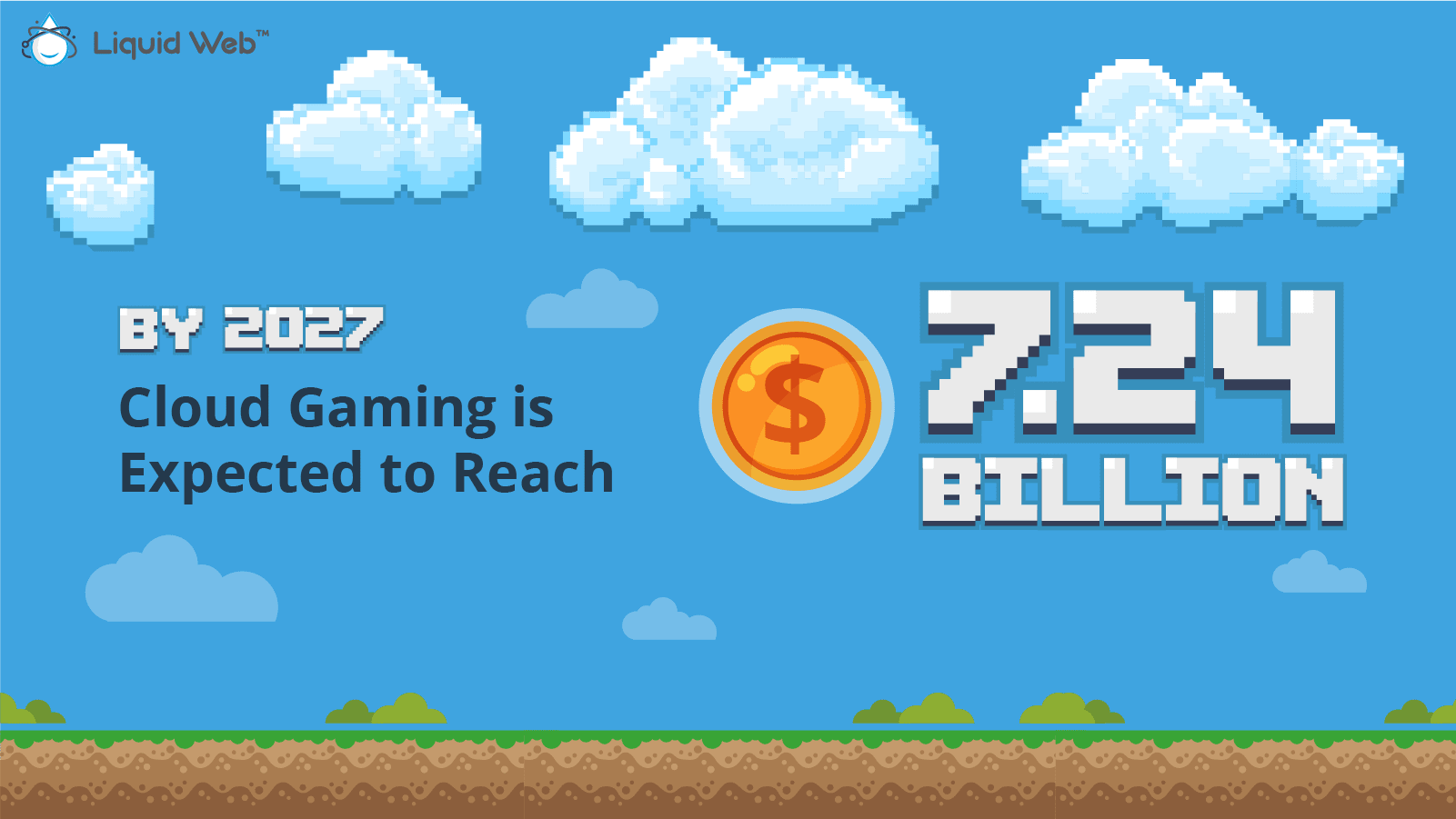
Much like the mobile gaming market, the cloud gaming market is also on the rise. Valued at $470 million in 2020, the global cloud gaming market is expected to reach $7.24 billion in 2027—which is a CAGR of 48.2% over this time period.
This rise in popularity is due to things like expanding Internet access, more game accessibility in the cloud, and high-speed network infrastructures, such as 5G, being rolled out. Additionally, cloud gaming allows players to access games via remote servers rather than installing memory-intensive games on a console or PC—making it an even more popular choice than other platforms.
The rising trend of social media games also plays a role in the growth of cloud gaming, as many social networking organizations are acquiring cloud gaming providers to offer more gaming options on their platforms.
For example, in December of 2019, Facebook, Inc. acquired PlayGiga—a Madrid-based cloud gaming startup.
Outside of Facebook, the current key market players in the cloud gaming sector include:
- Microsoft Corporation
- NVIDIA Corporation
- Ubitus, Inc.
- Vortex
- Google, Inc.
- Amazon, Inc.
- Intel Corporation
- Tencent
- Sony Corporation
- Blacknut
- Playkey
- Loudplay
- Apple, Inc.
- Electronic Arts, Inc.
- Hatch Entertainment
- Jump Gaming, Inc.
How the Pandemic Shaped Gaming
Compared to many other economic sectors, the video game industry remained resilient throughout the pandemic in 2020. Sales of video game-related software, hardware, and accessories increased because of lockdown orders, as many people turned to video games to pass the time.
In March of 2020, all video game hardware, software, accessories, and game cards purchases in the U.S. totaled $1.6 billion, which was a 35% increase over March 2019. And when looking at performance across all of Q3 2020, video game-related spending reached $11.2 billion, a 24% year-over-year increase in comparison to Q3 2019. (July-September).

Although sales were at an all-time high, there were still some negative impacts of COVID-19 on the video game industry. For example, many major trade events—such as GDC, EDX, and E3—were canceled or postponed.
Typically, trade events are used as a valuable platform for major studios and hardware manufacturers to make big announcements regarding the latest generation of consoles or exciting new titles set for release. Additionally, some indie video game creators use these in-person to meet with potential partners and gain support with funding or publishing.
Hardware production issues caused by the pandemic also played a role in shaping the video game industry in 2020. The Nintendo Switch—one of the pandemic’s most sought-after gaming consoles due to the widespread popularity of “Animal Crossing: New Horizons”—suffered from major supply chain issues as a result of both lockdown orders and quarantines.
Sony is still experiencing the ripple effects of the pandemic when it comes to hardware production shortages, specifically with the PlayStation 5 (PS5). Sony recently warned a group of analysts that the PS5 will remain in short supply well into 2022, which is partly due to shortages in components like semiconductors.
The gaming industry has become such a wide and vast arena that, while general trends are important to understand, some data as it applies to developers isn’t quite universal. Take, for example, what happened with how the pandemic affected the gaming market overall. While the industry saw benefits overall, this doesn’t paint an accurate portrayal of the impacts felt by indie developers and AAA gaming studios.
For the most part, big-budget games experienced delays in their development cycles. Even behemoth franchises like Halo and Battlefield saw continuous pushbacks in the release dates of their latest entries.
But while bigger studios were more adversely affected by the pandemic for games already in development, the impacts of COVID-19 offered an opportunity for smaller studios that could leverage their agility and flexibility to thrive.
The World of Indie Game Development
Indie developers were able to escape the adverse effects of supply chain issues caused by the pandemic due to increased agility and flexibility over bigger studios. When looking at data published by Video Game Insights about games published on Steam, AAA, and AA publishers released between 10-20% fewer games in 2020 than in the previous two years. On the other end of the spectrum, 25.6% more indie games were released on Steam in 2020 as compared to 2019.
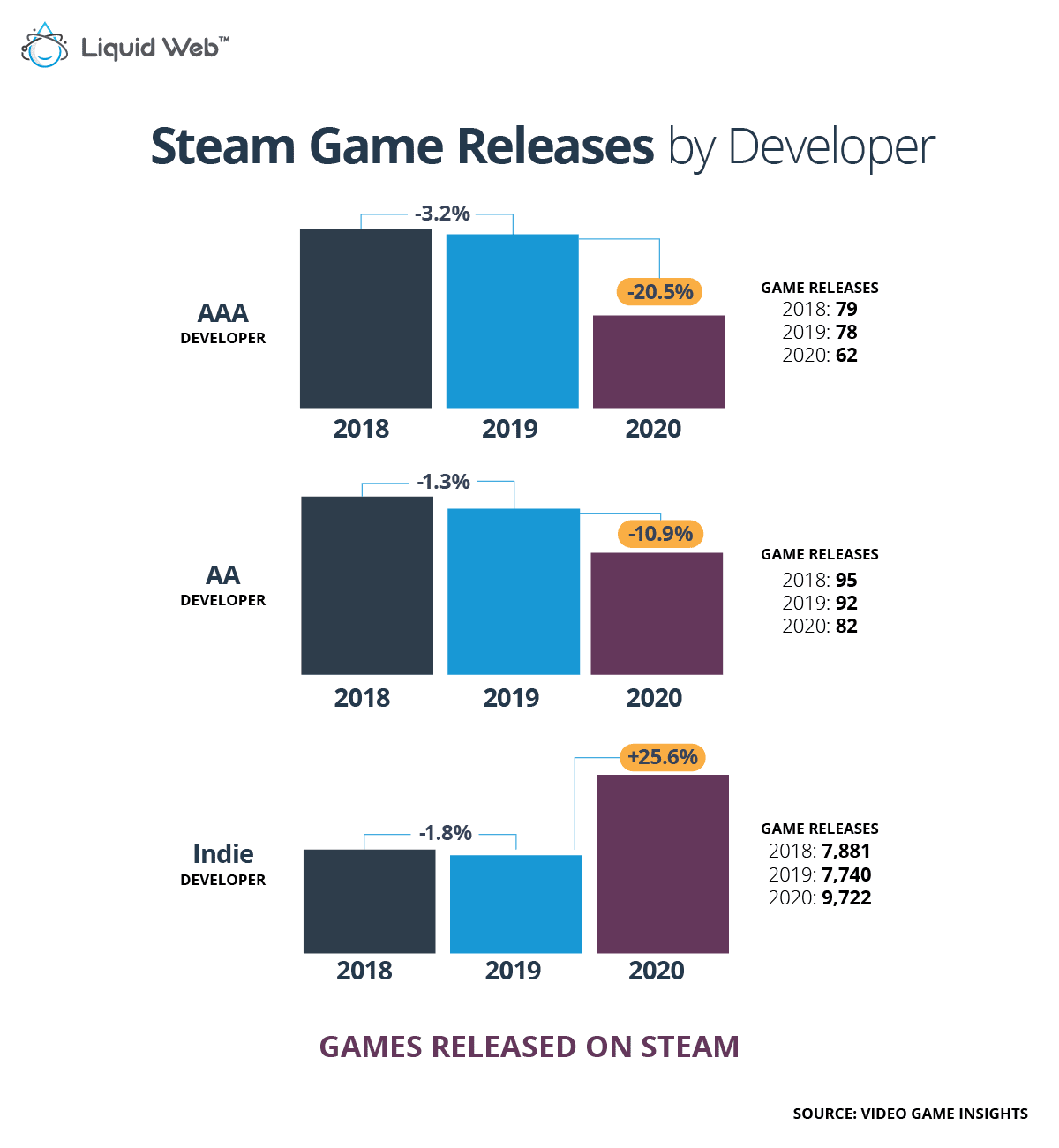
The outlook for indie developers would appear bright. But as the world continues to adapt to post-pandemic life, indie developers no longer have an edge over the mammoth developers who have also learned to adapt. The opportunity for these smaller development teams remains high, but challenges remain as steep as ever.
Are Indie Games Profitable?
Competing against larger studios on all platforms is a true David and Goliath struggle even though the barriers to entry for indie developers continue to break down. While more indie games were released in 2020, the truth is that over 50% of indie games on Steam have never made more than $4,000, and over 2/3 of these games don’t reach $10,000 in lifetime revenue.
However, the top 1% make more than $7 million in lifetime sales. But there are plenty of examples of indie developers that have done quite well. Here’s a look at some of the top-selling games of all time, some of which many might not realize started out as indie games:
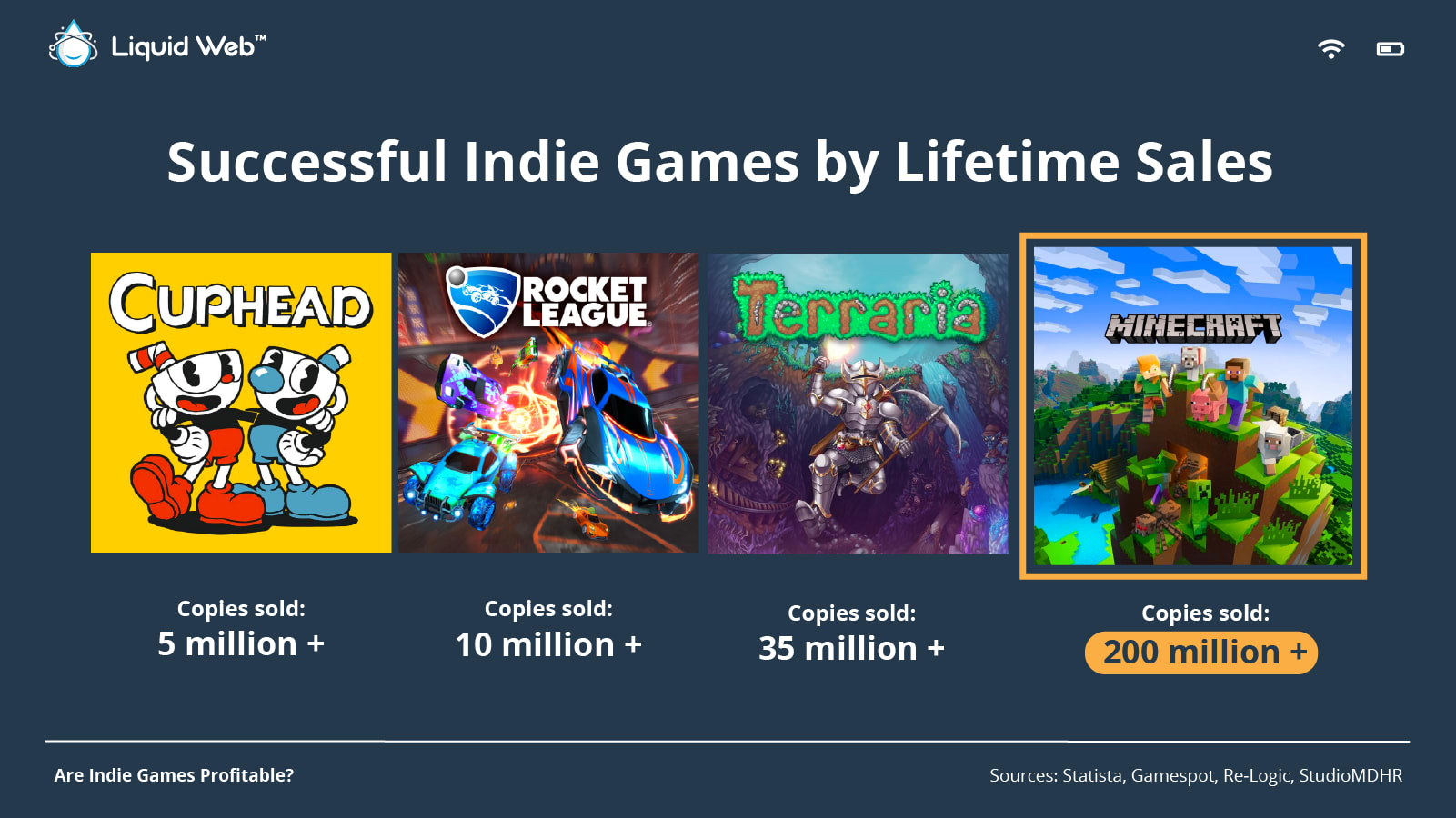
Judging whether a game is profitable is extremely difficult to gauge since there’s a lot of data developers don’t share publicly.
Over the last decade, many large and small developers have turned to alternative ways of earning revenue on their titles. The most common is what’s known as a “free-to-play”—sometimes also referred to as “freemium”— a model where downloading and playing a game comes at no upfront cost to the user. However, the developer will design in-game content that users can choose to purchase but ideally doesn’t affect their gameplay if they don’t want to pay. In 2020, 16.6% of indie titles on Steam were free.
Some other ways indie developers can monetize their games include:
- Subscriptions.
- Merchandise.
- In-Game Advertising.
- Promotional Partnerships.
Most Profitable Indie Game Genres
The kind of game aspects a developer wants to make can take many forms, such as the story, gameplay mechanics, art style, and more. In some cases, it makes sense to home in on a specific genre.
While it’s not uncommon for games to cross multiple genres, here’s a breakdown of several genres and their median revenue in 2020 on Steam:
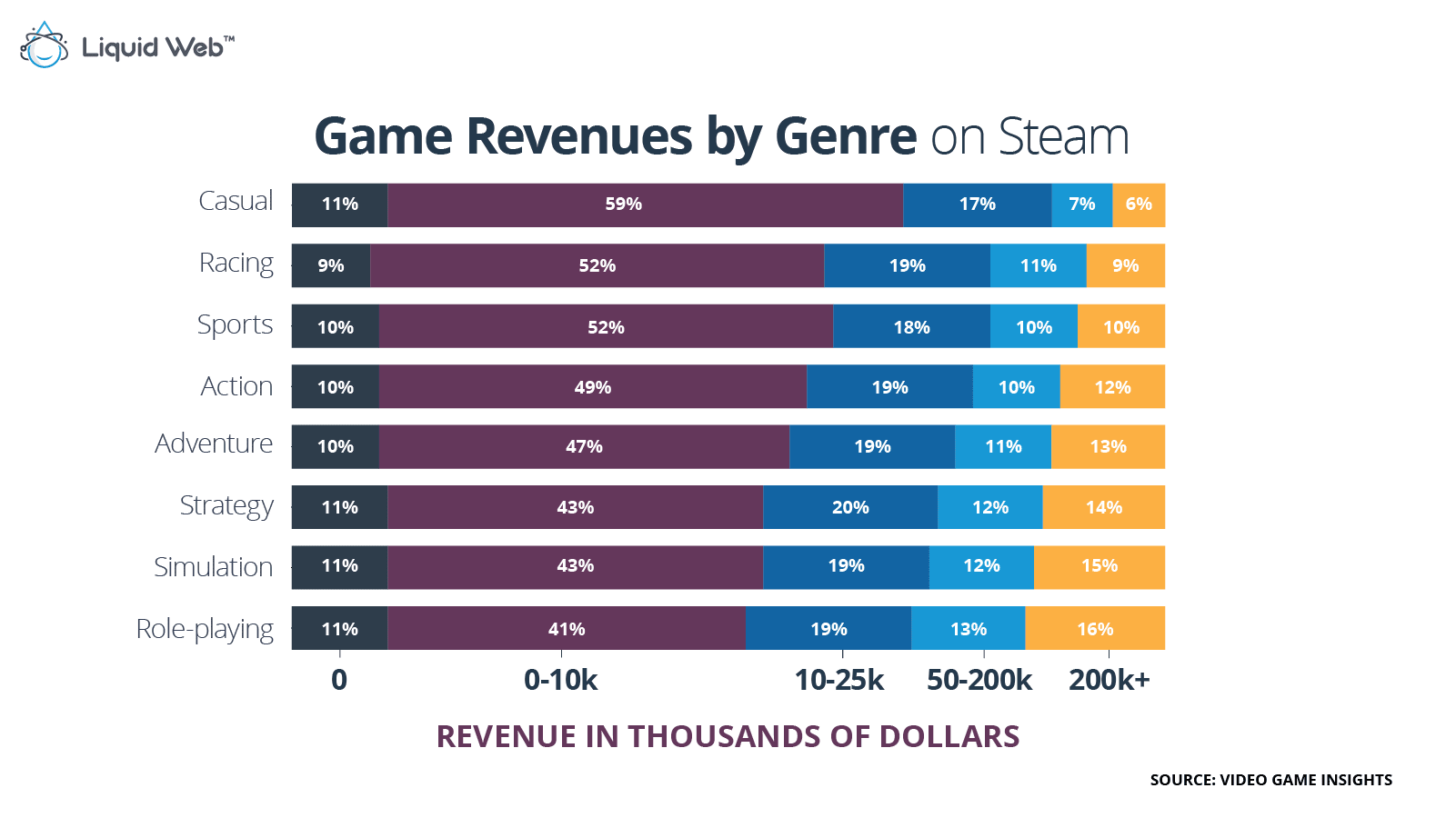
Some of the more notable takeaways are that casual games are oversaturated and have less earning potential. Another factor this data doesn’t show is the breakdown between the challenges of creating a game for single and multiplayer experiences.
For the most part, multiplayer experiences can offer huge potential for creating games since MMOs and RPGs present the most opportunity for profitability. However, many indie developers may shy away from creating multiplayer games due to the complexity involved with maintaining a consistent and enjoyable experience for players.
How Indie Developers Can Win Against Big Studios
Despite the greater difficulty, some of the most profitable indie games of all time were multiplayer games. This is why indie developers should still consider multiplayer games, provided these devs have the right team and a suitable hosting service provider that offers servers with the greatest level of control.
In order to stand tall against the influence and power of larger developers, indie devs must consider all the tools that can give them an edge. In the case of building the next smash-hit online multiplayer game, cloud hosting and dedicated servers are two of the most important solutions small developers can have in their arsenal. To choose the right hosting, developers need to assess whether a hosting provider has solutions that:
- Allow for quicker development with high-performance environments that can spin up and down faster.
- Have an infrastructure that is capable to scale up to meet demands during launches or betas.
- Have DDoS mitigation and protection tools built-in.
What Does the Modern Game Developer Look Like?

According to a game developer survey in July of 2021, it was found that 61% of responding game developers were men, while 30% percent were women—which was up from 21% in 2017.
8% of responding game developers identified as non-binary, gender fluid/genderqueer, two-spirited, or transgender.
In terms of race, 75% of game developers stated that they were White, while only 9% of respondents reported being Hispanic.
As of 2020, the most in-demand jobs in gaming include software engineer, user experience (UX) designer, and data and analytics analyst. Software engineers make up 29% of all open roles in the gaming industry, and many organizations are searching for well-rounded engineers that are proficient in multiple programming languages, techniques, and software, including:
- C++
- Java
- HTML5
- CSS3
- JavaScript
- SQL
- Golang
- DevOps
- Linux
- Objective-C
- Swift
- Kotlin
Takeaways
Between the development of advanced video game technologies, more Internet accessibility than ever before, and increased popularity due to the COVID-19 pandemic, the video game industry remains stronger and more diverse than ever before. As we look towards the future of the industry, don’t expect the end of the pandemic to slow things down, either.
According to a 2021 study by the Entertainment Software Associated (ESA), 90% of gamers surveyed said they are likely to continue playing video games even after social distancing is no longer required.
If you’re an agile developer looking to create the next online title that captivates imaginations and creates unique experiences gamers will love, Liquid Web is here to help. With our fully managed online game hosting options—including cloud dedicated servers and dedicated servers—you can easily take control of every aspect of gameplay.
Reach out to our team today to discover which hosting option is right for your online gaming needs.

